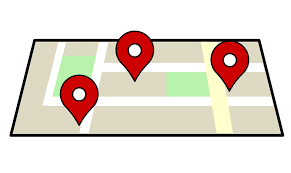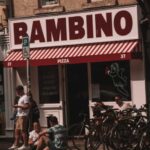Choosing a retail location can make or break your business. It’s one of those high-stakes decisions that doesn’t just affect foot traffic—it shapes your brand identity, customer experience, and ultimately, your bottom line. Many passionate entrepreneurs have poured their savings into beautiful storefronts, only to realize that a poor location choice doomed them from day one.
Let’s walk through some practical yet powerful location criteria that should be part of any retail site decision.
Is It Convenient for Your Customer Segment?
Put yourself in your ideal customer’s shoes. Where do they live? Where do they work? Where do they already shop? If your business isn’t situated in a place that naturally fits their lifestyle, you’ll be fighting an uphill battle for every visit. Convenience isn’t just about geography—it’s about routine.
Does It Offer Adequate Parking?
You could have the perfect product in the perfect setting, but if your customers can’t find a place to park—or if they have to pay for it—they might not stop at all. A lack of ample and free parking, especially in suburban or car-dependent areas, is often a deal-breaker. If parking is limited, is there nearby overflow? Is it well-lit, safe, and easily accessible? If paid parking is unavoidable, consider validating parking or offering a discount to help offset the inconvenience.
Does It Align with Your Market Identity?
Your location is part of your brand. A high-end boutique in a strip mall next to a discount tobacco shop sends the wrong message. Conversely, a quirky, artistic concept might thrive in an edgy part of town with lots of foot traffic. Ensure the neighborhood reinforces the story you want your business to tell.
Is It on Your Customer’s Daily Path?
Retail thrives on routine. Locations that sit on a customer’s commute—either to work, school, the gym, or popular destinations like grocery stores or gas stations—make it easy for people to drop in. Being “on the way” matters more than being “nearby.”
Related Post: Location Location Location! Wait, Maybe Not…
Is It Easy to Find and Highly Visible?
Visibility is marketing. A store that blends into the background or hides behind other buildings is easily missed. Drive or walk past the space at different times of day. Can you spot it without trying? Is the signage clearly visible from the street? What about at night—how’s the lighting?
Bonus tip: If visibility is an issue, compensate with thoughtful signage, lighting, or even outdoor displays that catch attention.
Can You Market Freely?
Check city ordinances, lease agreements, or HOA guidelines that may restrict your signage, flags, sandwich boards, or even window displays. Some landlords or business parks limit your marketing reach, which could hinder your customer acquisition efforts. Look for spaces that allow you the freedom to express your brand visually and creatively.
Related Post: 27 Free/Inexpensive Proven Ideas to Create Brand Awareness
Does It Have the Space You Need—Now and Later?
It’s easy to get excited about a cozy space that’s just big enough for your current operation. But retail businesses grow—whether in inventory, services, or staffing. If your chosen spot doesn’t have room for backroom storage, customer seating, or future displays, you may outgrow it sooner than expected.
Can You Afford It Without Breaking the Bank?
Rent is one of the biggest fixed costs for a retail business. It’s not just about affording the rent now—it’s about whether your projected revenues can sustainably support it. A gorgeous storefront in a high-rent district might seem like a status symbol, but if it eats up your margins, it’s a fast track to failure.
Many entrepreneurs go bankrupt not because their product was bad or their customer service was poor, but because their location choice made it impossible to succeed. Often, the issue isn’t the location alone—it’s that too much of the startup capital was sunk into the lease, leaving little left for marketing, staffing, or inventory.
Location Isn’t Everything—But It’s a Lot
Even the best location won’t guarantee success if no one knows you exist. If your shop is hard to find or off the beaten path, go the extra mile:
- Include a detailed map on your marketing flyers and website.
- Use GPS-friendly addresses.
- Add local landmarks (“next to Walgreens at Main & Pine”) to help guide people.
- Claim and optimize your Google Business Profile to ensure visibility on Google Maps.
Remember, convenience and clarity go hand-in-hand. Customers don’t want to work to find you.
How much planning and research do you put into your business’s physical location—and do you revisit its effectiveness as your customer base grows or shifts?












